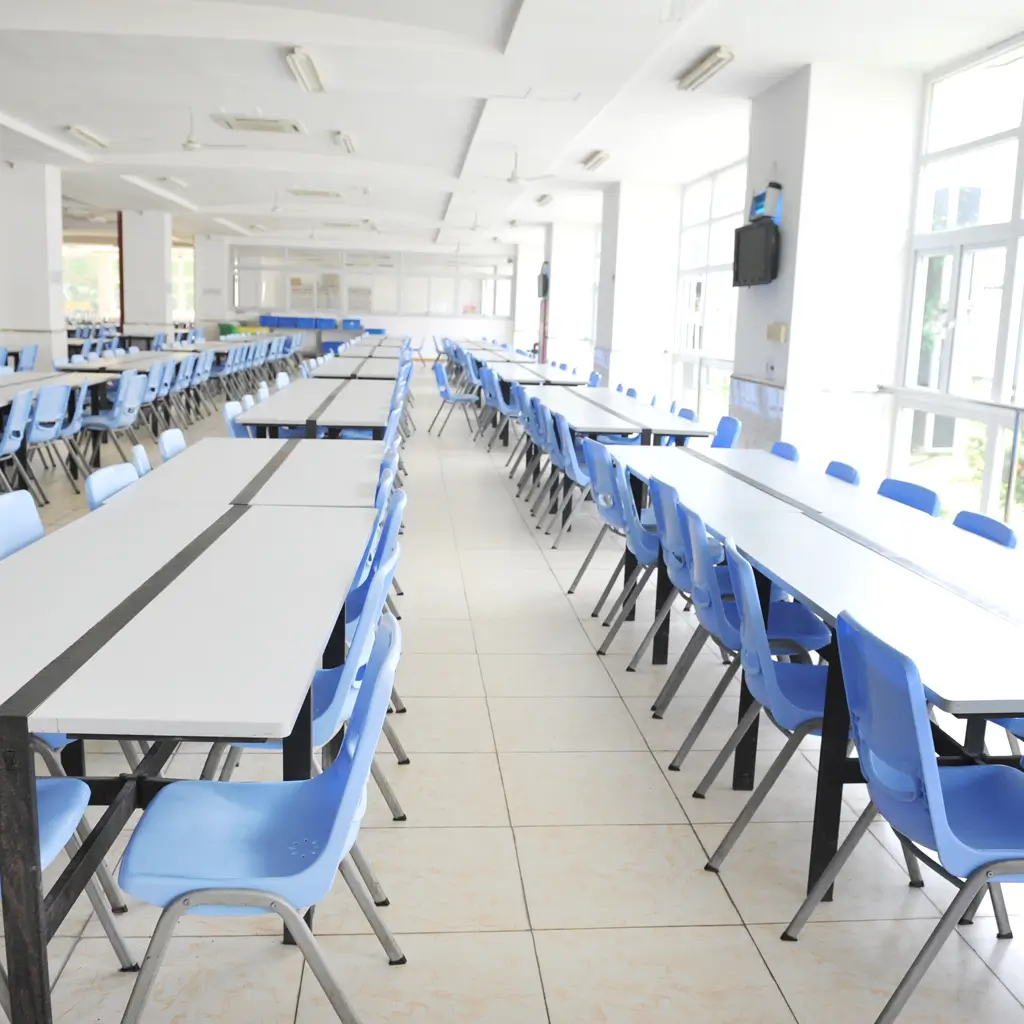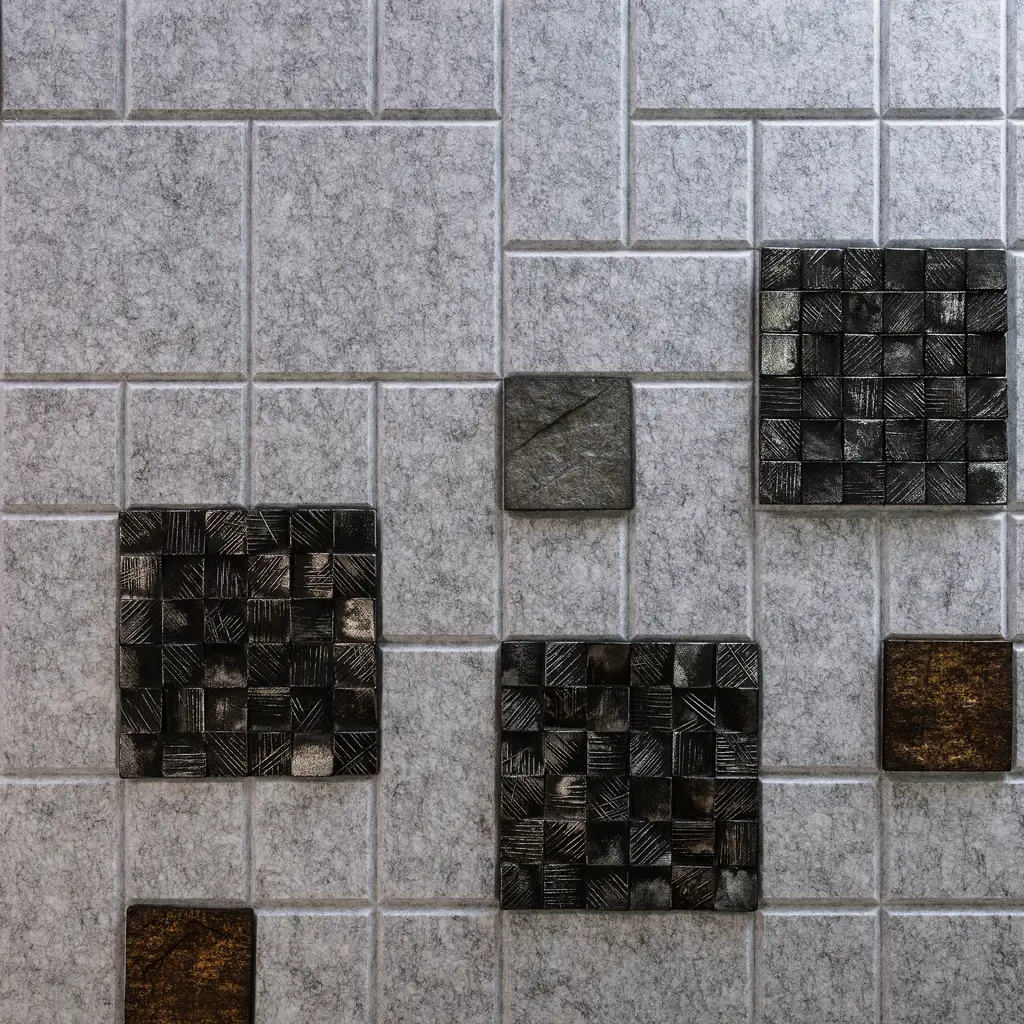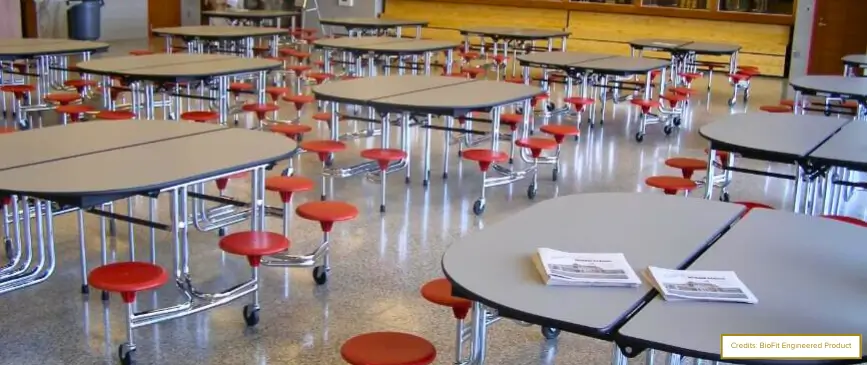
Introduction
Struggling to keep your school cafeteria quiet while still letting students relax? We understand this fight. Balancing a bustling social hub with a peaceful dining area is challenging.
Too much excessive noise can seriously impact students’ ability to concentrate in class, increase stress levels, and make communication a real headache.
And when you have hundreds of hungry students all in one place, it’s easy for things to get out of hand. Ultimately turning the « break » lunch into a « test » lunch.
But fear not because we have got a game plan to tackle that noisy cafeteria. At Ingenious Culinary Concept, a quieter cafeteria means happier students and a better learning environment. So, we have made a guide to help. Ready to learn how? Let’s do it!
Impacts Of High Noise Levels in School Cafeteria
Inflated noise in the school cafeteria can significantly affect students, teachers, kitchen staff, and all the atmospheres, creating challenges to learning, development, communication, academic performance, and overall well-being within the school community.
Suggested reading → The Impact of School Cafeterias.
RESEARCH SHEET:
A study looked at kids in second and third grade from 293 schools and found that the noise level in the cafeteria is usually around 79.7 decibels, which is pretty loud. This loud noise can harm their hearing if exposed to it often.
The study also found that kids enjoy eating in a quiet cafeteria less and tend to leave their fruits and veggies uneaten. Loud noise can be distracting and make it hard to taste and smell food and have a good conversation.
- For students, the constant chatter and other noises make it hard to enjoy their meals or socialize with friends. Relaxing and recharging before returning to class can also be challenging. Additionally, the noise can make it tough to hear announcements or essential information from school staff.
- For Teachers, the noise makes it hard to monitor students and ensure they follow cafeteria rules. As a result, this contributes to more disruptions and difficulty in maintaining a calm and orderly environment.

Here is a list of some more potential side effects caused by noisy school cafeterias.
| Learners | Management/Teachers |
| Barriers to calming and rejuvenating around lunchtime. | Potential delays to instructors’ lunch breaks or planning sessions. |
| Potential delays to lunchtime routines. | Increased stress and irritation during mealtime supervision. |
| Increased stress, hearing loss, and discomfort owing to a noisy setting. | The health of the workforce in the canteens is substantially damaged, as the noise causes 20% of the mental internment. |
| Possible detrimental effects on mood or emotional well-being. | Possible dangerous influence on overall job satisfaction and morale. |
| Trouble focusing on tasks or doing schoolwork during lunch break. | Limited ability to handle individual student needs or concerns in a noisy environment. |
Reasons for High Noise Levels in School Cafeteria
Cafeterias can get pretty loud. You have got students chatting away, laughing, and munching on their cafeteria food/meals with friends.
It’s all part of the hustle and rush of the cafeteria scene. But have you ever wondered why it sometimes feels like a tornado of noise?
At ICC, we believe understanding why cafeterias become so noisy is critical, given the number of conversations, clattering trays, and kitchen equipment involved.
It is the first step to control the noisy atmosphere talking lead with every passing day.
To aid it, here is a list of straightforward reasons that school management often fails to notice that explain why cafeterias turn into a symphony of sound:
Big, Open Spaces
Cafeterias are often expansive rooms designed to accommodate a large number of students. These open spaces lack barriers to absorb sound, allowing it to re-eco and amplify throughout the area.
Lots of People Talking
During lunchtime, the cafeteria fills with the chatter and laughter of students engaging in conversations. The cumulative effect of numerous voices talking simultaneously contributes to the overall noise level.
Hard Surfaces and Furniture
The surfaces within cafeterias, such as floors and tables, are predominantly made of hard materials like concrete or tile. Sound waves hitting these rigid surfaces are reflected rather than absorbed, increasing noise levels.
Kitchen Equipment Sounds
Operating kitchen equipment, including blenders, dishwashers, and industrial ovens, generates additional noise in the cafeteria, ultimately affecting the overall dining.

Clattering Trays and Utensils
As students move trays, utensils, and other dining accessories, the resulting clattering noise adds to the ambient noise level in the cafeteria. The collective noise from these activities can become quite pronounced during peak meal times.
Echoes and Bouncing Sound
Cafeterias often feature high ceilings and large, uninterrupted wall surfaces. This architectural design facilitates sound waves bouncing off surfaces, resulting in echoes and prolonged noise duration, known as reverberation.
No Sound-Absorbing Stuff
The absence of sound-absorbing materials, such as carpets, drapes, or acoustic panels, exacerbates noise levels in cafeterias. Without these materials to dampen sound, the noise remains unchecked and continues to escalate.
Students Not Knowing
Sometimes, students don’t realize how loud they are being. They might keep talking loudly without someone telling them, making the noise level stay high.
Cultural Things
In some cafeterias, traditions or cultural norms encourage loud behavior, like cheering during events or thinking that talking loudly shows confidence.
How To Reduce Noise In School Cafeteria? 13 Ways!
Indeed, a school cafeteria is not a library, and the sound of children chitchatting and laughing is inviting and cheerful. However, it should not be so loud that children must yell to be heard.
Therefore, finding the right balance in the cafeteria environment is essential to ensure students and teachers can relax, socialize, and enjoy their meals without distractions.
Here are some tips for making school cafeterias a more pleasant ambiance.

→ Organic Strategies for Noise Control in the School Cafeteria
1. Establish Orderly Behavior
Encourage teachers to conduct practice sessions with their homeroom students on entering the cafeteria in an orderly with assigned seats.
By mirroring a classroom entry’s calm and structured atmosphere, students are more likely to maintain positive behaviors throughout lunch.
Hire our cafeteria seating services today!
2. Streamline Transitions
Transitions and movements within the cafeteria can often contribute to noise levels. To mitigate this, ensure that students are scheduled appropriately and there is sufficient space for orderly movement in the lunch lines.
For example, visual aids such as signs or colored poster boards can signal different groups for food service, reducing the need for verbal announcements that can add to the overall noise. By optimizing the flow of students during transitions, noise levels can be effectively managed.
3. Train Staff Effectively
Ensure cafeteria staff understand their role in maintaining a peaceful environment. Training sessions and ongoing reminders can reinforce the importance of interaction with students and minimize unnecessary chatter.
4. Clear Expectations
Clearly communicate your expectations for behavior in the cafeteria to staff and students. This can be done through placing posters, verbal reminders, and regular discussions in lunch rooms to ensure everyone is on the same page.
5. Implement Positive Incentives
Create a system of rewards to motivate students to keep noise levels down. This could involve tracking behavior visually and offering prizes or privileges to classes or individuals who consistently demonstrate good behavior.
For example, giving a green star to the table for maintaining discipline and not creating chaos.

6. Provide a Quiet Break Room
Designate a quiet space where students can take breaks from the cafeteria noise without being disturbed. This room should be separate from the cafeteria and provide a peaceful environment for students to relax and recharge.
7. Implement Group Separation
Teachers can minimize noise by separating student groups within the cafeteria. By placing groups at different tables, interactions between groups are reduced, leading to a quieter overall environment.
8. Time Allocation
Allocate specific time slots for different activities during lunch breaks. For example, designate 10 minutes for silent eating, 10 for quiet conversation, and 10 for recreational activities. This structured approach helps manage noise levels effectively.
Suggested reading → 10 Easy Steps to Modernize Your School Cafeteria.
→ Advanced Strategies for Noise Control in the School Cafeteria
9. Install Sound-Absorbing Panels
Use materials like echo eliminator or cellulose panels and install them on walls or ceilings to absorb sound waves and reduce echoes in the cafeteria, helping to create and maintain a quieter environment.
10. Renovate with Soundproofing Drywall
Consider upgrading the cafeteria with soundproofing drywall to reduce noise transmission further. This drywall can be installed during renovations to improve acoustic performance and absorb sound easily.
For example, replace existing ceiling tiles with acoustic ones designed to assimilate sound. These tiles can help lessen repercussions and improve overall acoustics in the cafeteria.
11. Select Sound-Absorbing Furniture
Choose furniture that absorbs sound vibrations, such as upholstered chairs and benches with dense foam padding. Opt for tables with laminate or wood surfaces, which also help dampen sound.
Moreover, I prefer soft textures and rounded edges to minimize sound reflections, creating a more comfortable environment for students and staff.
Suggested reading → How to Choose the Right Cafeteria Seating For Your School.
12. Lodge Noise-Canceling Technology
Consider installing noise-canceling devices or systems that reduce ambient noise in the cafeteria. These technologies use advanced algorithms to counteract unwanted sounds, creating a quieter environment.
13. Utilize Soundproof Curtains
Install soundproof curtains or drapes around the cafeteria perimeter to help absorb sound and prevent noise from escaping. These curtains can be drawn during lunchtime to create a more sonically controlled environment.
By combining these organic and techy strategies, schools can reduce noise levels in the cafeteria, creating a more peaceful and conducive environment for students and staff.
Read more → 8 Creative Ways to Decorate Your School Cafeteria.
How to Reduce Noise in Cafeteria — In A Nutshell
In conclusion, quiet school cafeterias are essential for all school levels. However, on the other hand, it is important to remember it is not just about hushing the room but amplifying student well-being and academic success.
By implementing noise-reducing strategies like sound-absorbing materials and mindful seating, we can create spaces where students can refuel their bodies and minds in peace.
For further suggestions on improving your cafeteria graphics and experience, contact us at Igneous Culinary Concept. We’re dedicated to bringing smiles and calmness to your space.
Suggested reading → How to Create the Best High School Cafeteria?
FAQs
Q: Can minor modifications to the cafeteria layout minimize noise?
A: Yes, rearranging seating to create smaller, more intimate spaces and using barriers or separators can aid in sound absorption and noise reduction.
Q: Can involving the school community help with noise control efforts?
A: Yes, involving parents, teachers, and administrators in talks about noise management tactics and soliciting their feedback can increase support and efficacy of adopted measures.
Q: Are there any cutting-edge innovations that can help with noise control?
A: Sound masking devices producing low-level, concealed background sound can help reduce speech intelligibility and noise distractions.
Q: Are there any educational efforts that help raise noise awareness among students?
A: Yes, organizing assemblies or classroom presentations on the consequences of noise pollution and respecting quiet spaces can raise awareness and build a noise-mindfulness culture.



